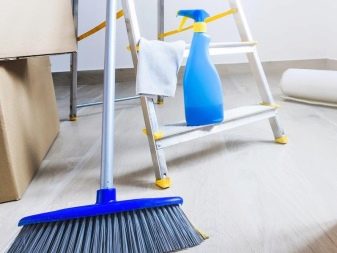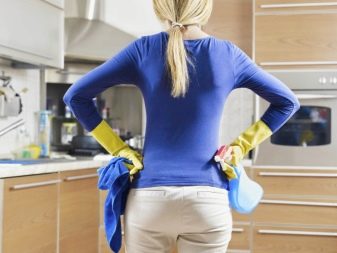How to clean up after renovation?
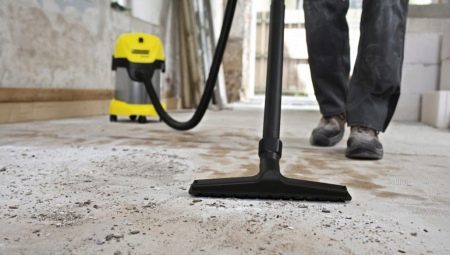
Some repair work can only be entrusted to craftsmen, but doing them with your own hands is expensive: building materials are expensive and you want to use only modern and high-quality ones. Then comes the time to eliminate the consequences caused by construction processes. The global information space is replete with proposals to carry out high-quality cleaning of the premises. But the natural desire to save money makes you think about solving the problem, how to do cleaning after repairs without outside and expensive help.

What is necessary?
In a residential or public, functional or utility room, sooner or later a moment comes when it is simply impossible to postpone cosmetic or even major repairs. Renovation of the interior, replacement of doors and windows, application of modern methods bring incomparable satisfaction to the inhabitants or users of the premises, but the time comes for cleaning after renovation.

The complexity of this process after reconstruction work is no less than after construction, but if you do not deal with the cleaning of fresh pollution, later it will simply be impossible to get rid of them.
The most common recommendation is to invite cleaning specialists, but sometimes the costs incurred no longer leave funds in the budget for this.

Advice from those who have gone through this difficult period more than once will help determine the list of tools and devices that will certainly be needed:
- old clothes (preferably with long sleeves and legs), comfortable shoes;
- protective equipment: a mask or respirator to protect the respiratory system, rubber gloves, a kerchief or cap to cover your hair, goggles for the eyes;
- rags (natural, hygroscopic, in large quantities);
- special formulations, sometimes aggressive, since water and a rag do not remove repair dirt well;
- propylene garbage bagsleft over from the builders;
- scraping tools (if they are dirty, they need to be washed or cleaned, unnecessary ones must be removed in the designated places).
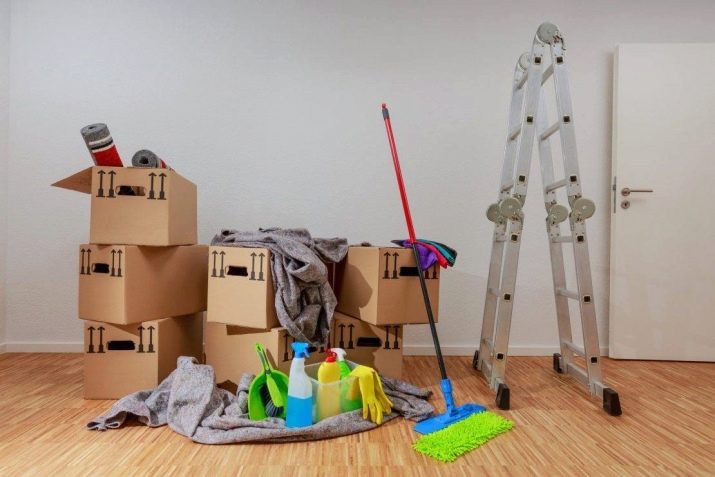
General cleaning will require the same arsenal. And for any kind of procedures for cardinal cleaning of premises, auxiliary devices will certainly be required: an old chair, a stool, a stepladder, a mop, a bucket or several buckets, a basin of water, hard and soft sponges, brushes, spray guns and brushes on the handle for new windows.
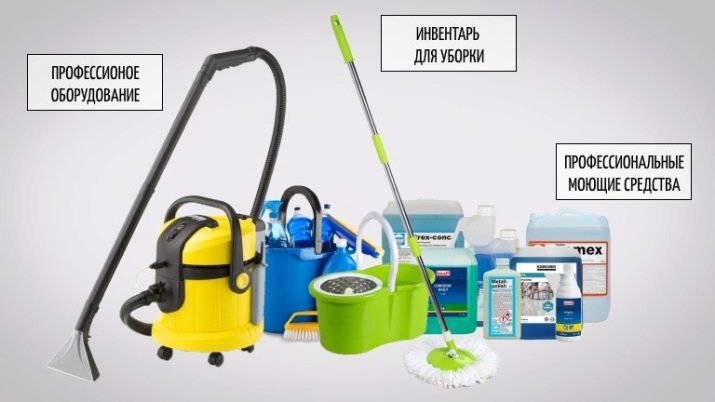
How to remove construction waste?
The field of activity determines the process of removing waste from construction: there is not so much of it in a one-room apartment, but in a country house such a volume can collect that you have to pay for a car for removal. Bags are purchased at the supermarket or specialty store. They should be not very voluminous (so that you can lift and take out without strain), impervious (so that dust does not spill out of the holes) and durable, into which all the construction waste is added.
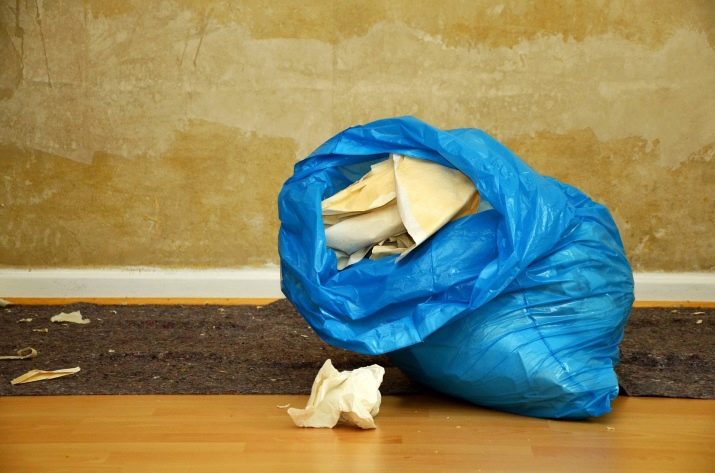
In any case, you will have to start with this:
- in a 2-room apartment the distant room and utility rooms are cleaned first: the bags are folded in the passage room or corridor (not on the front door), and then taken out;
- in a 3-room they work according to the same principle - a place for storage is chosen close to the entrance (in order to quickly take it out when the car arrives, but not next to the entrance doors, so as not to impede the entry of workers);
- cottage, private or country house they begin to clean up from the second floor or attic: you can take the bags outside, because this is a private area, and leave them on the back of the gate or fence.
If the remains of building materials are found, they are removed to the pantry or to a specially designated place (in case of damage to surfaces). If you are sure that they will not be needed, you can offer them to friends or relatives, or leave them neatly packed near the trash can.
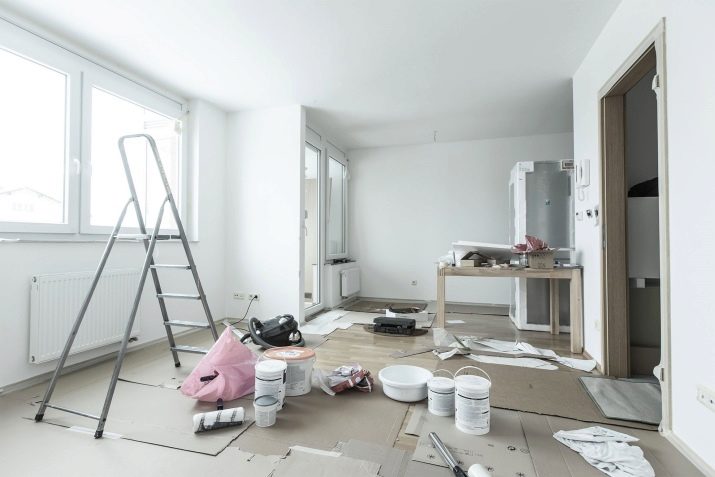
How do I clean surfaces?
Without rubbish, a renovated apartment or a rebuilt house looks much nicer, but then it turns out that it will take a long time to clean up and a lot of effort is needed.
In each room, pollution can vary:
- dust - it will show up even after all the precautions taken, such as plastic wrap;
- other accessories and segments, which wet cleaning may be required repeatedly;
- before you start cleaning the floor, you will have to clean the windows, furniture, doors (also included in this list), it is recommended to handle everything carefully;
- in commercial premises you will need clean the toilet, sink, plastic and ceramic tiles.

The authors of glamorous publications insist that it is simply impossible to do this on your own, since the volume of work is large, and it is unrealistic to do some processes with high quality without special tools and devices, for example, a household or construction vacuum cleaner, which is certainly in the equipment of a cleaning company... However, a comprehensive, consistently carried out cleaning, done by hand, will help not only cope with all the difficulties, but also save on paying for a not the cheapest list of services from professionals.
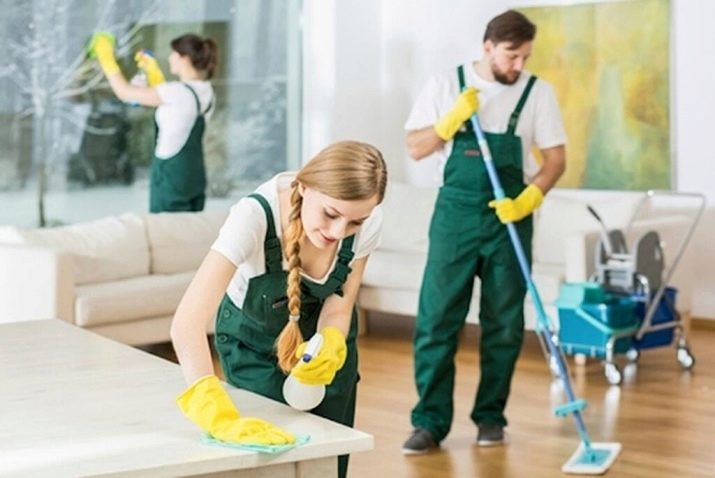
Floor
The algorithm for carrying out involves cleaning in the last turn, but it does not interfere with carrying it out at the preliminary-preparatory stage. Otherwise, the accumulated dust will rise into the air from the movement of the worker.Experts recommend using a special vacuum cleaner for this purpose (household vacuum cleaner can get clogged from construction dust and residues). But you can use a broom to remove any dry particles and wipe the surface with diluted vinegar and salted water to remove stubborn stains.
General recommendations apply with caution to laminate and parquet flooring - here you need to use a damp, wrung out napkin or microfiber cloth. The hostess has at her disposal detergents made in industrial chemistry for each of the modern types of coatings. The final cleaning of the floor is carried out after the completion of the rest of the processes.

Walls and ceiling
At the preliminary stage, to remove dust, use a mop wrapped in a soft cloth, a broom or pipidaster. Recommendations to wipe with a damp cloth may be incorrect when it comes to decorative plaster or stretch ceiling. Cement spray can be removed with a spatula or a special compound, paint with a mild solvent, whitewash and water emulsion can be washed off with an aqueous solution.
At the final stage, you can use a vacuum cleaner, but only on the condition that there are no remnants of mortars, plaster or cement on the walls and ceiling.
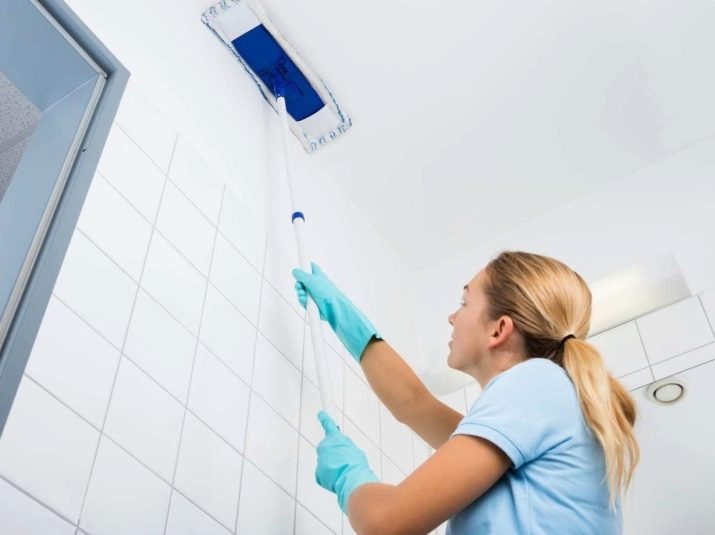
Furniture cleaning
If the pieces of furniture could not be removed from the room, and polyethylene and rags did not provide sufficient protection, stains are removed from upholstered furniture and carpets with a cotton swab dipped in ordinary milk. Next, we proceed according to the usual algorithm:
- fat or acid neutralized with alkali (soda solution, household shavings diluted in hot water);
- alkaline - vinegar, grape, malic or citric acid;
- paint stains - white spirit or other solvent (with great care);
- surface of wood or plastic furniture - a soft cloth soaked in soapy water;
- glass, including window glass - special means, a brush on the handle or an ordinary cotton rag.
Furniture is an extensible concept; you will have to recognize and observe your own nuances for natural wood, old or new wood-chip materials, plastic or with metal parts.

Window cleaning
Not the most difficult of the stages, as well as cleaning the mirrors, which, by mistake, ended up in the premises being repaired and were not protected from contamination. There are ample supplies in supermarkets. But before using them, you need to remove dust and residues of building materials from a smooth surface with a regular sponge moistened with water with ammonia or with an added dishwashing detergent (for a mirror - without aggressive components).

Cleaning of plumbing equipment
This kind of cleaning is carried out only with special devices and means. If you cover them in advance, then special efforts will not be required. Metal parts can be wiped with a vinegar solution (both in the kitchen and in the bathroom), for rusty streaks in the toilet - use citric acid, sprinkle the washbasin with soda, and then moisten with vinegar, rinse and wipe dry. These recipes will come in handy for those who have run out of money during the repair. It is more optimal, of course, to purchase a good industrial product for certain needs.
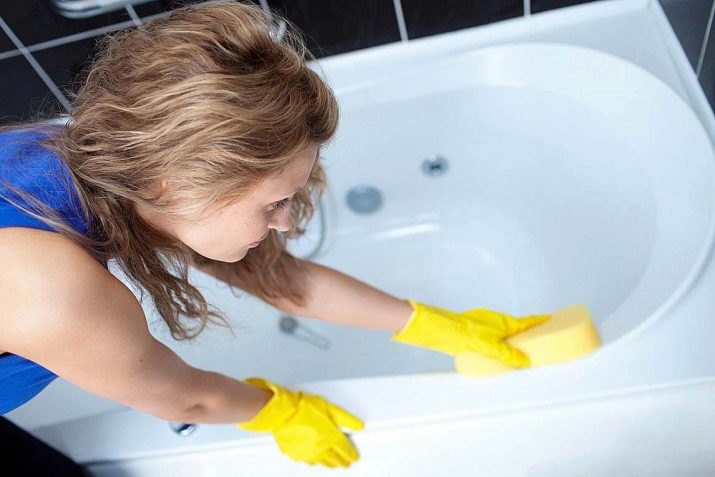
How to get rid of the smell?
In this case, different recommendations can be given: an ionizer, an air conditioner, an air humidifier will help perfectly. To a lesser extent - scented candles or aroma lamp, folk methods like lavender, lemon balm, lemon and soda with vinegar. A great way is to arrange containers of water and hang out damp towels and sheets. Coffee beans and charcoal can help eliminate odors in small spaces.
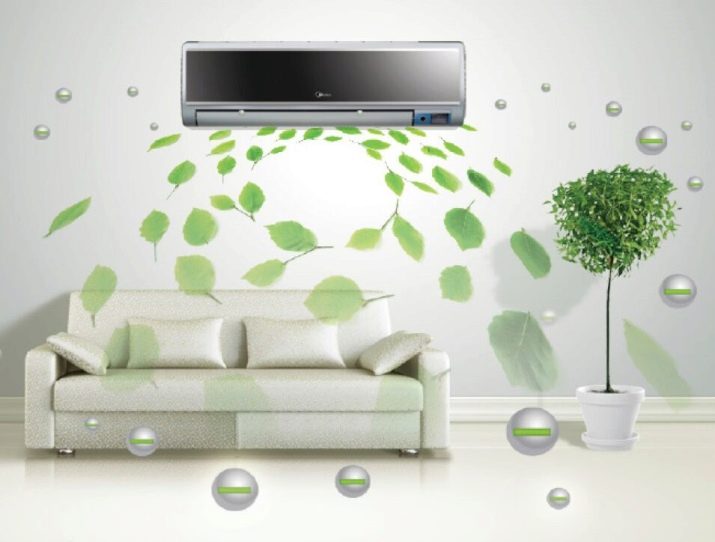
Useful Tips
Experts are sure that the three most essential items for cleaning are a ladder, a construction vacuum cleaner and a respirator.If we are talking about holding a one-time event, and not about professional activities, there is no point in purchasing things that will not be useful later. They can be rented for a small fee or borrowed from friends and family.
Before using aggressive compounds, they must be tested in an inconspicuous place. Check out old books on home economics for a million ways to remove dirt and stains with baking soda, laundry soap, ammonia, lemon and vinegar - affordable and cheap tools found in every home.
